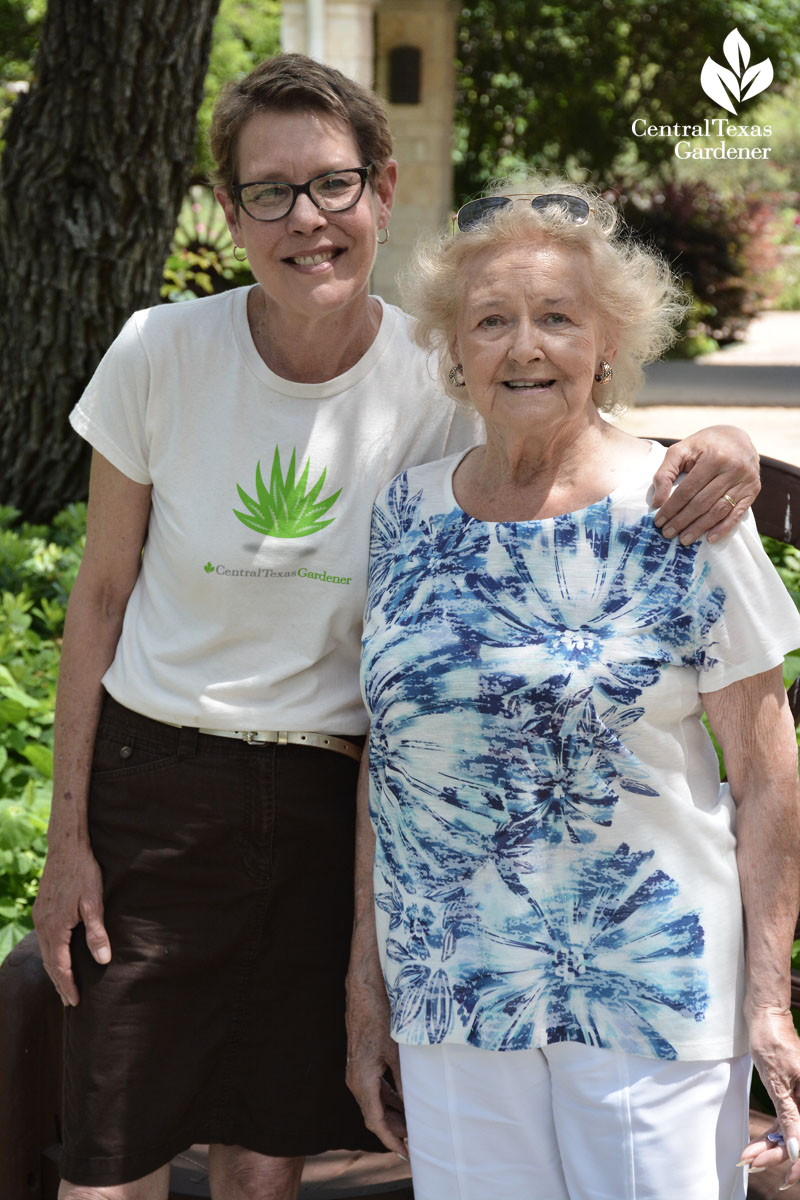November 5, 2015
Healing Garden for Soldiers & Top Tree Mistakes
Often I get this question: “I need a small tree in part shade. I’d love flowers, too.” Well, Daphne’s got your answer with native Mexican buckeye (Ungnadia speciosa), generally a multi-trunked tree to 8-12’. From bright shade to sun, it’s a hit in smaller, water thrifty gardens or as an understory in large ones.
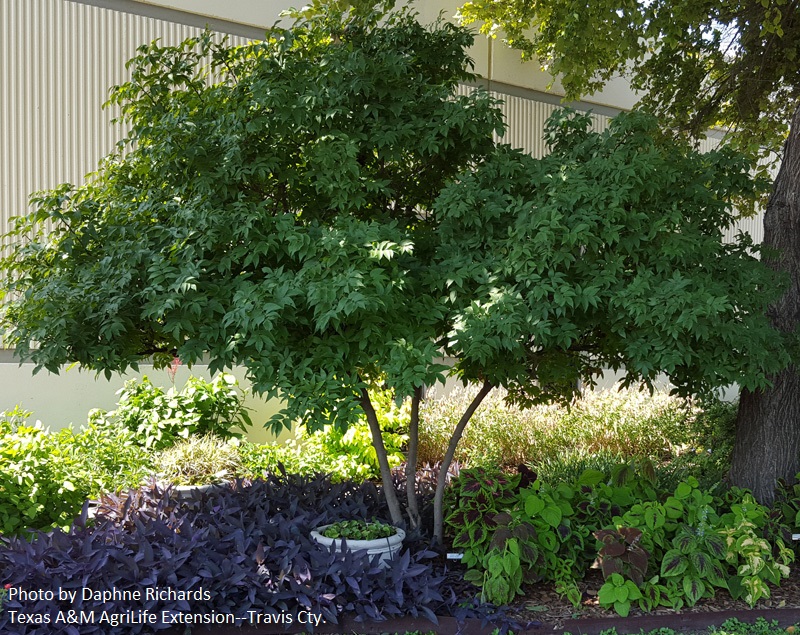
Like us, bees love its early spring flowers that pop before it renews its leafy canopy.
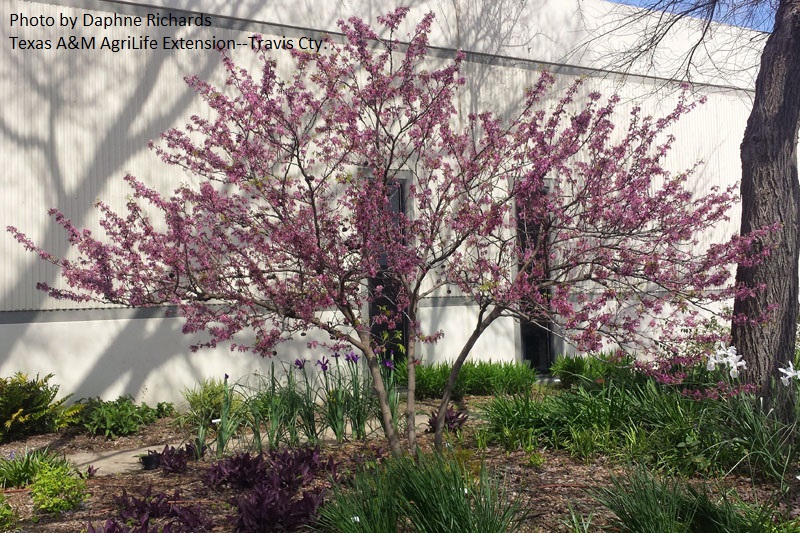
Its seedpods are just as ornamental (though the seeds are poisonous) and golden fall leaves promise a year-round sensation.
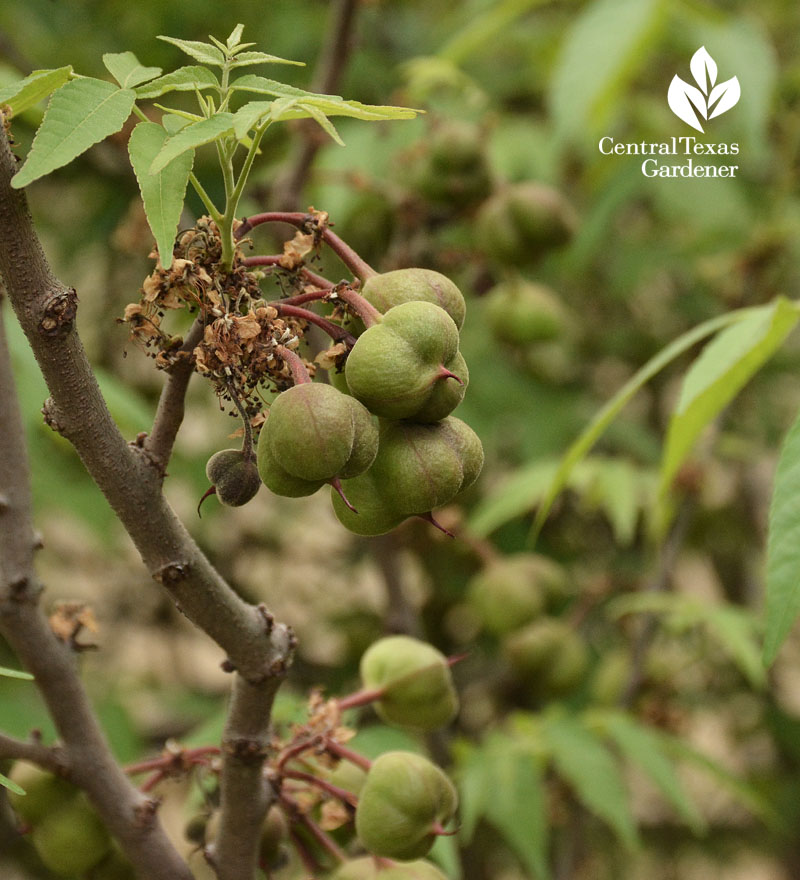
We love our trees except when they fall down, like this one in my neighborhood.
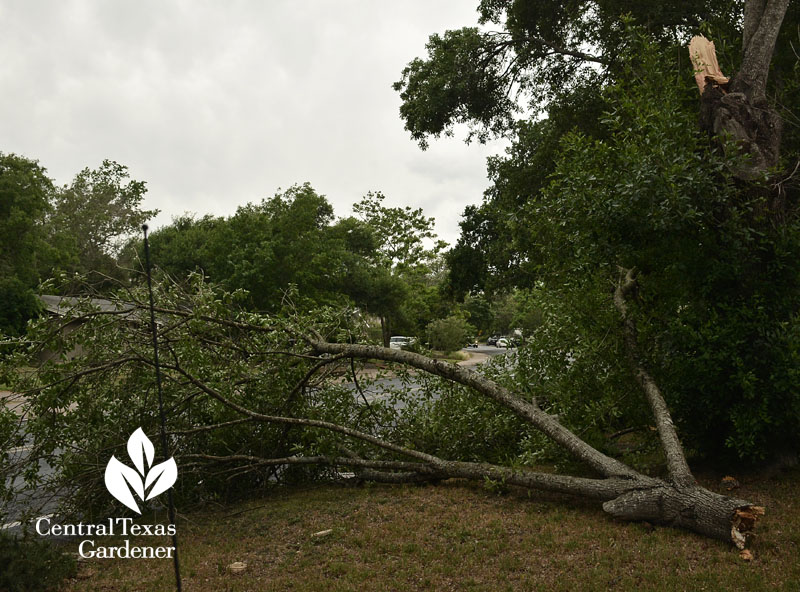
Many times our tree problems start the day we bring them home. Certified Arborist Andrew Anstrom from Bartlett Tree Experts joins Tom to name the top planting mistakes and how to steer clear of them.
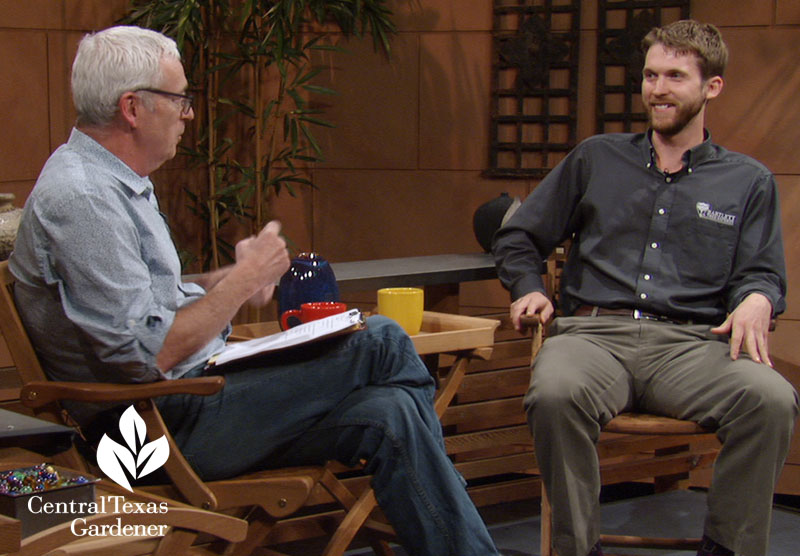
Number one: Planting too low. Andrew says, “Plant them high; they won’t die/Plant them low, they won’t grow.” Be sure that the top of the root ball (the root flare) is at least an inch above ground.
Number two: Girdled roots. Often nursery trees have been in pots so long that their roots twirl around themselves. Unless you pull them apart—and don’t be delicate!—eventually they will strangle the tree.
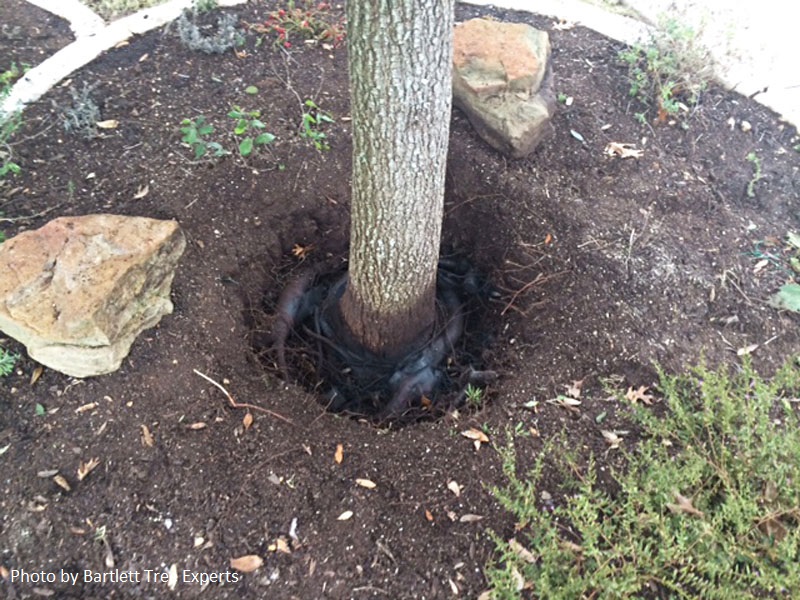
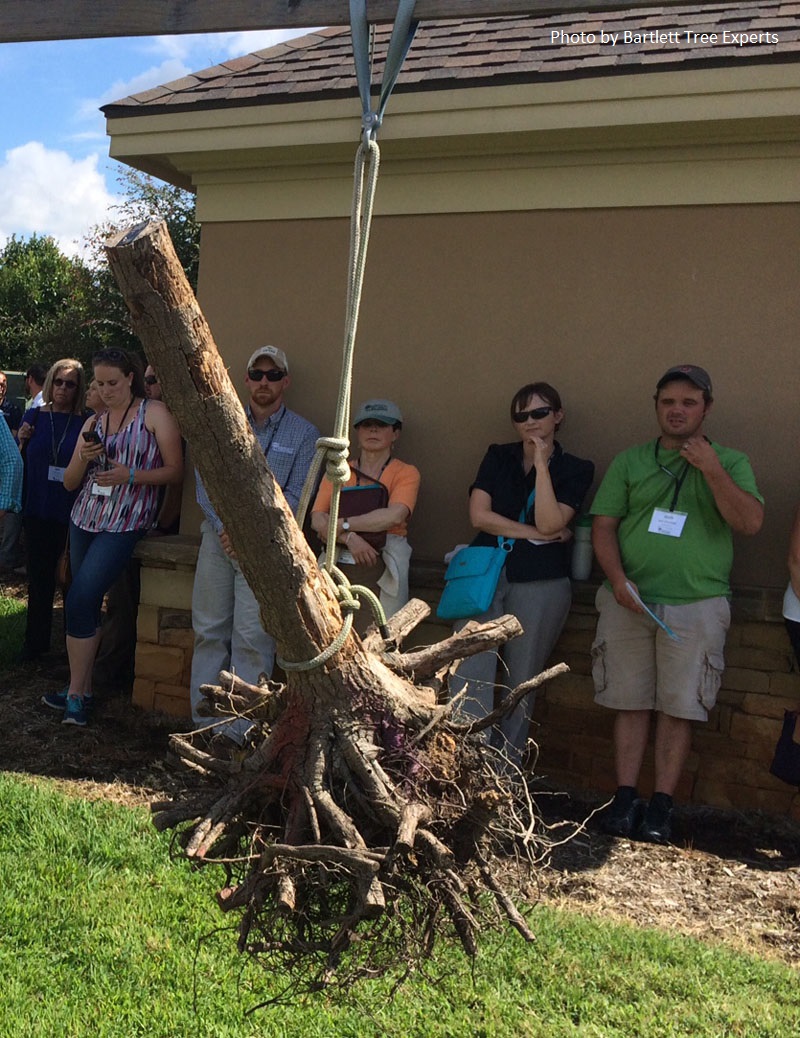
Number three: Insufficient water. Young trees need deep soakings for at least the first two years.
Planning a new structure? Andrew explains the half critical root zone and why to avoid it. Watch now!
Now, have you ever seen this on a tree? Jane Shepperd grabbed a shot of this unusual growth on a park tree and sent to Daphne. Is this okay or bad?
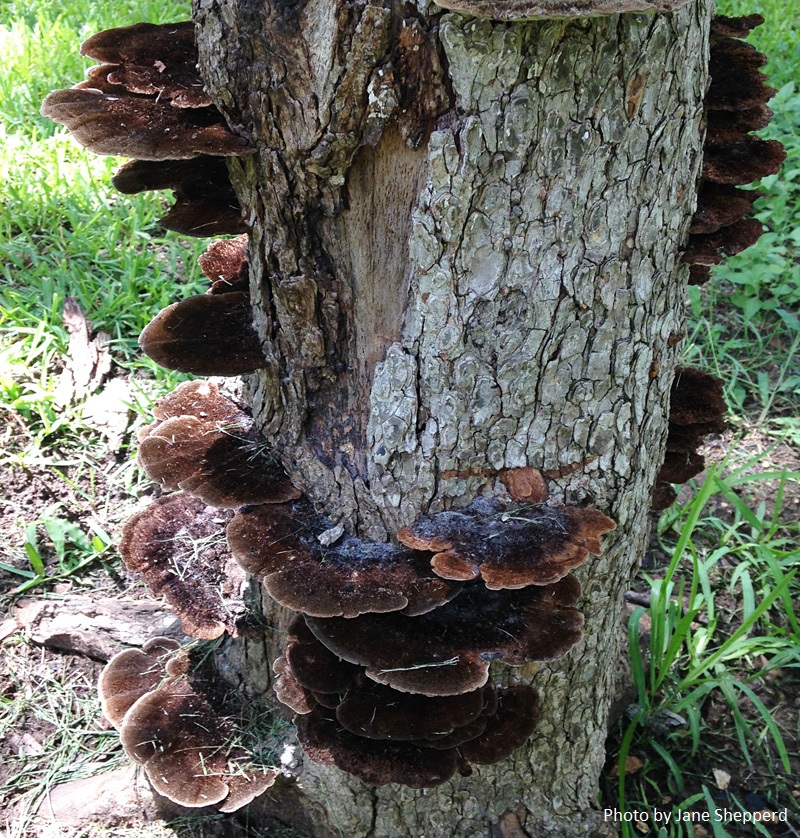
Daphne reports—definitely bad. This is shelf fungi, feeding on dead wood due to a wound near the base of the tree. It’s not contagious, so won’t harm neighboring trees, but slowly it will rot this tree from the inside out.
In winter, crape myrtles grace icy days with sleek, artful branches. Their flamboyant flowers put them on summer’s hit parade, as in Jean Warner’s garden, this week’s Viewer Picture.
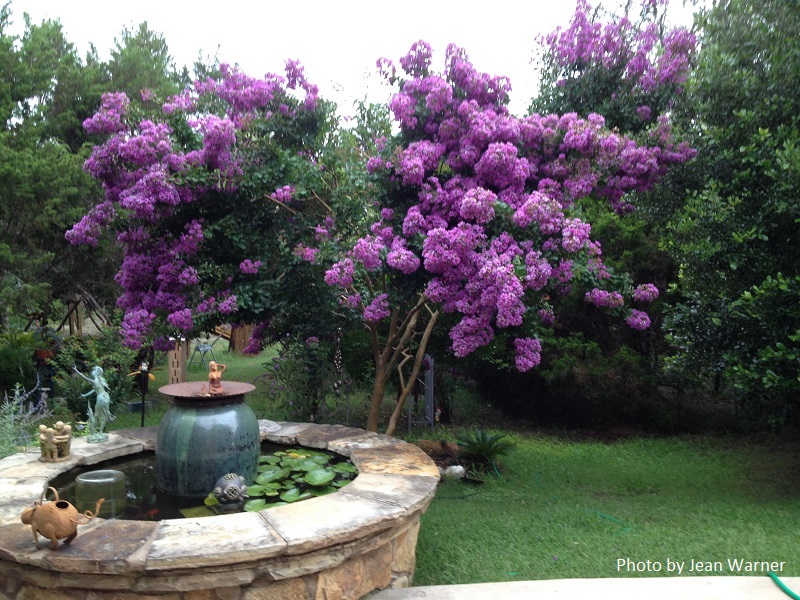
Fall is the busiest time for Trisha, since we can plant bulbs, wildflowers, trees, many perennials, roses and lots of vegetables.
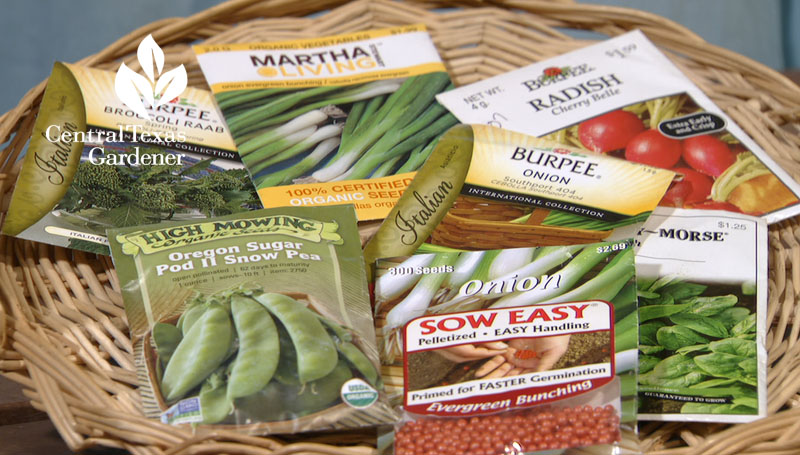
But Trisha advises against planting tender perennials, including Pride of Barbados, salvias that go dormant like S. guaranitica ‘Black & Blue’, lantana, plumbago and firebush (Hamelia patens). She tells us: “When these plants are dormant in winter it is very easy for their roots to rot in the soil with a prolonged wet spell. Once they’re well established after spring planting, they can handle the stress of winter.”
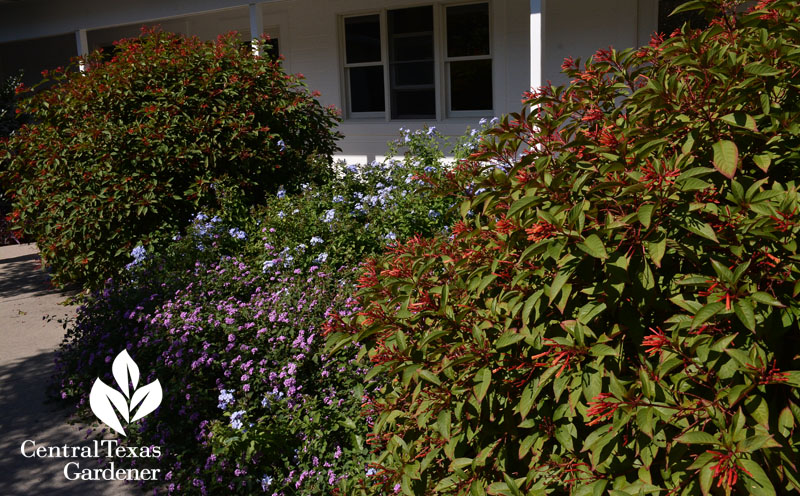
On tour at the Warrior and Family Support Center, another kind of healing is going on at the San Antonio Military Medical Center.
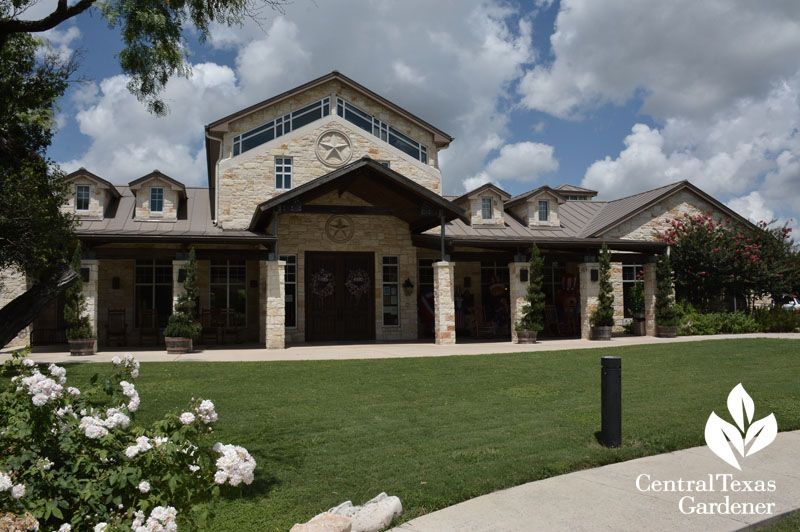
Along with its homelike Hill Country ranch-style activities center, acres of gardens assist soldiers and their families through physical and emotional recovery. In 2015, the American Horticultural Therapy Association presented them the Therapeutic Garden Design Award.
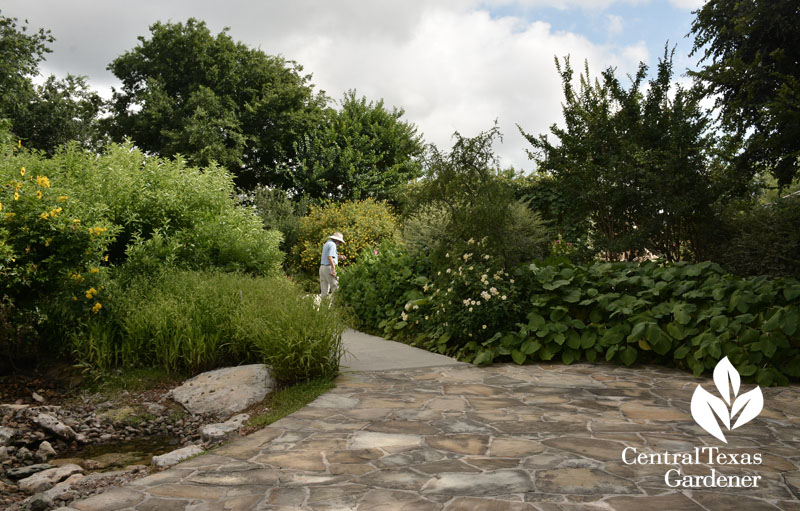
Director Judith Markelz tells us, “The purpose of it is to encourage warriors and their families and help them interact back into society in a new ‘normal’, because their lives are changed forever.”
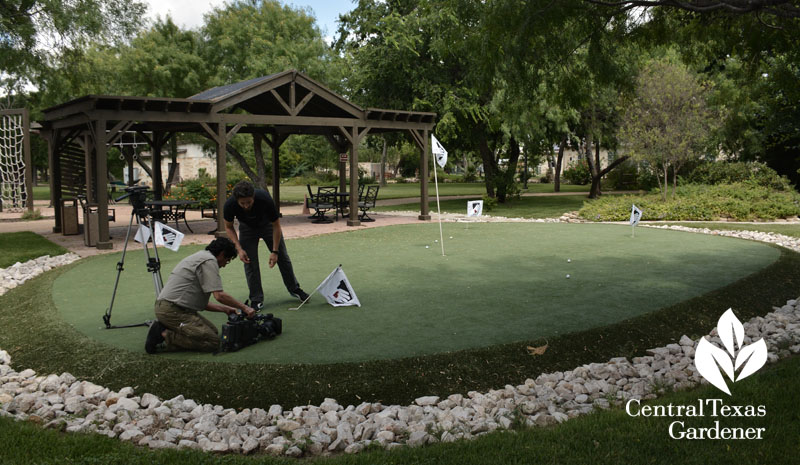
Although founded in 2003, it was five years later before the WFSC landed in their new home, thanks to Steve Huffman. He launched the non-profit Returning Heroes Home and with over 8000 start-up donations, they built the Center and its gardens.
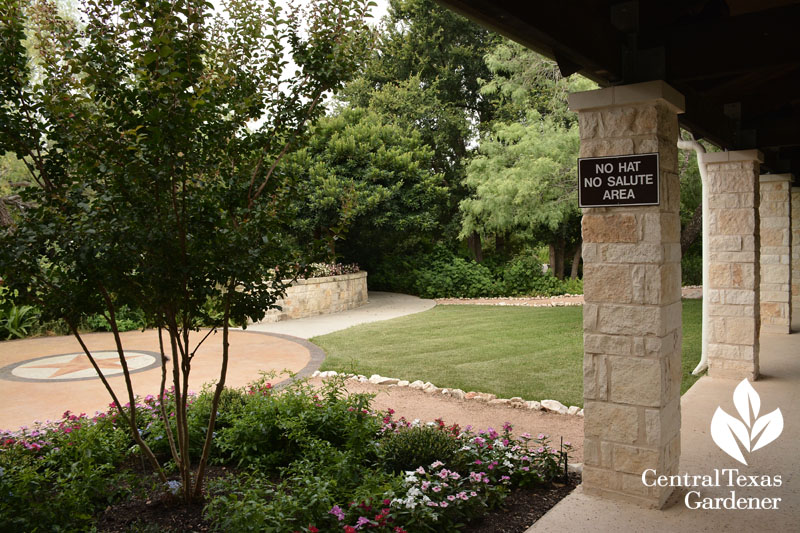
For walkways, berms and structures, they chose Portland-based Quatrefoil landscape architect Brian Bainnson, noted for his therapeutic garden designs.
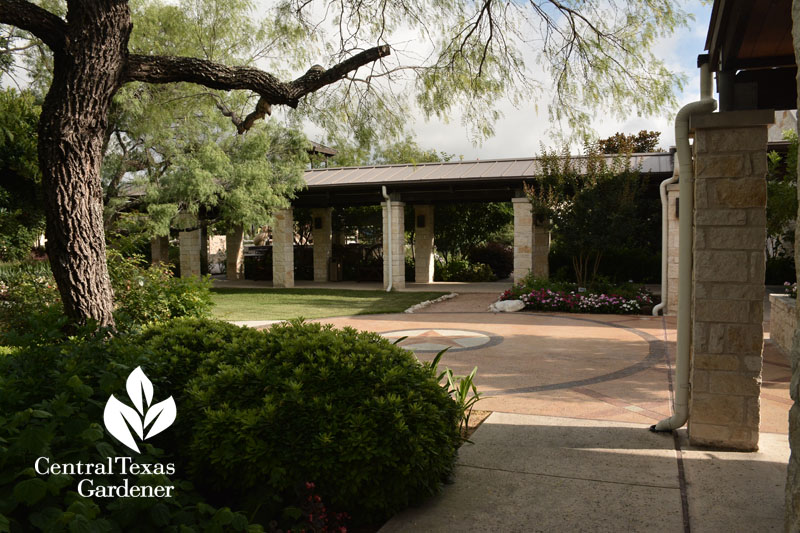
His choice of various surfaces wasn’t just for eye appeal. Gravel, grass, concrete, and even a wooden bridge help warriors with new prosthetics learn to walk on different surfaces.
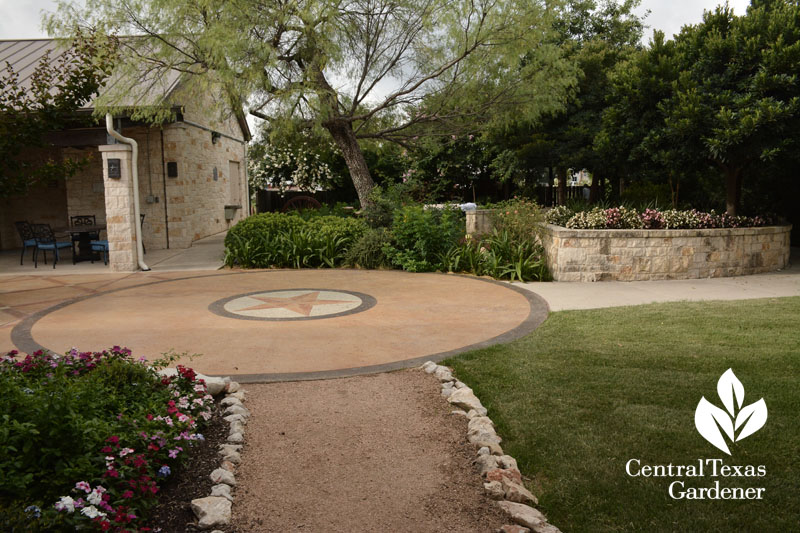
Dallas designer Jennifer Golden laid out the initial Texas tough plantings, financed by Returning Heroes Home. With water thrifty choices, she went for lush, colorful, and fragrant, avoiding plants that remind soldiers of where they received their injuries.
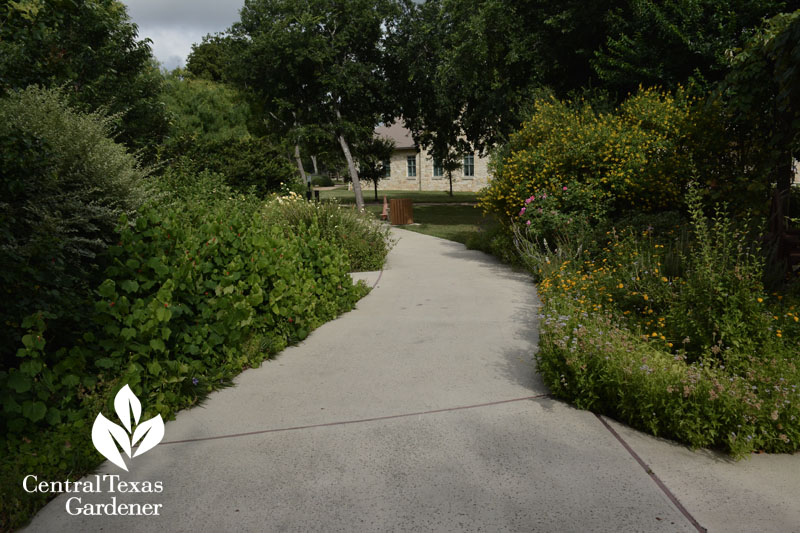
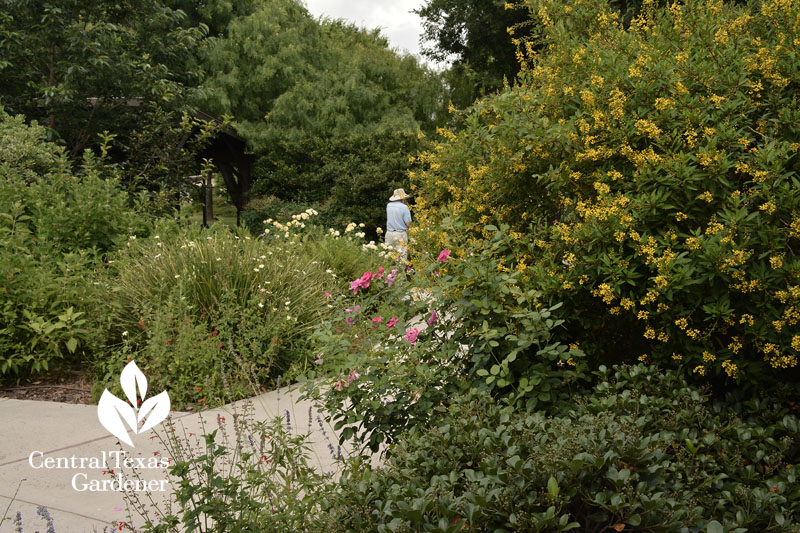
Since then, local nurseries and gardeners jump in to add plants and materials.
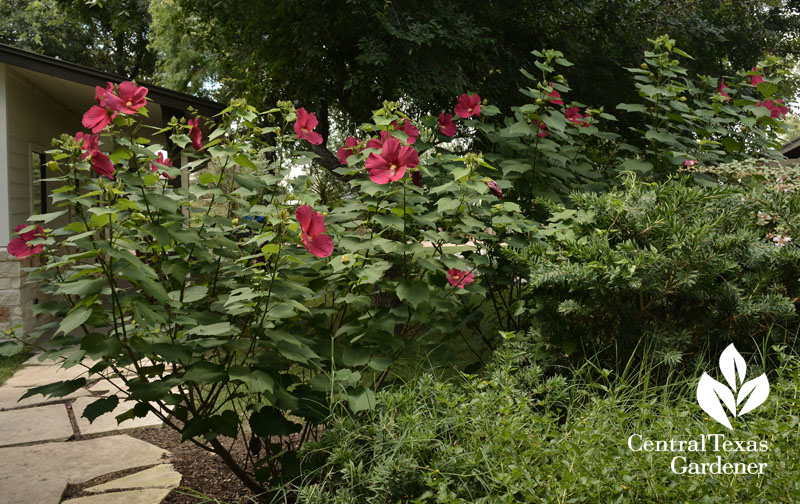
Until they hired staff gardener John Carter a few years ago, volunteers solely kept it in tip-top shape. Lead Volunteer Melody McMahon (on the left) has nurtured it since day one. Joining her is Shirley Fox, who suggested this segment! Luis A. Deyaluis, Public Affairs Specialist/Broadcaster at Fort Sam Houston was our host.
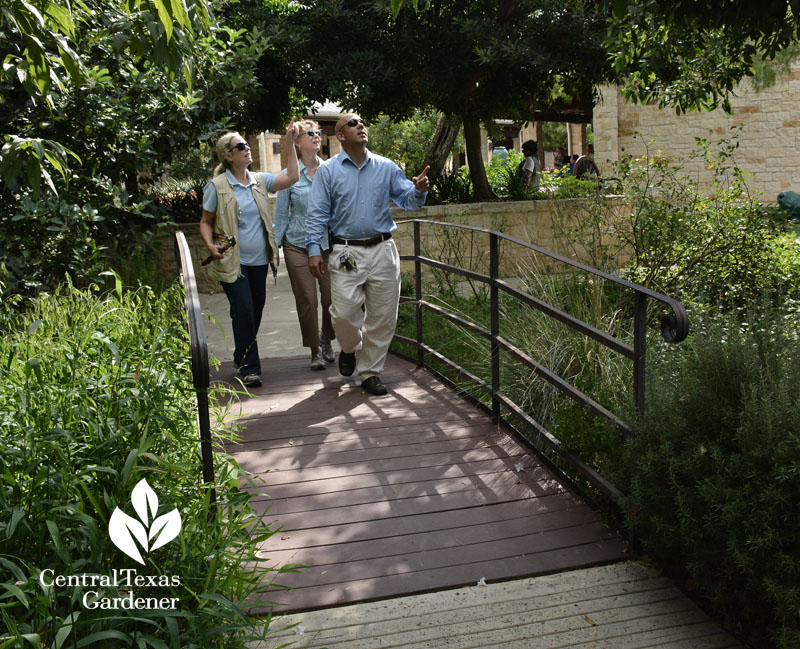
You’ll find the Gardening Volunteers of South Texas and Bexar County Master Gardeners at work here several days a week.
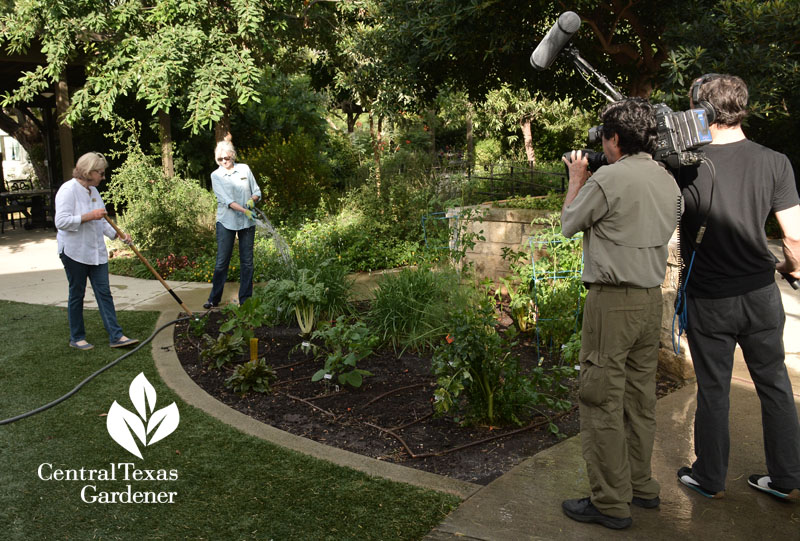
Many warrior moms join in, too. Working with plants is renewal and therapy for them as their sons recover.
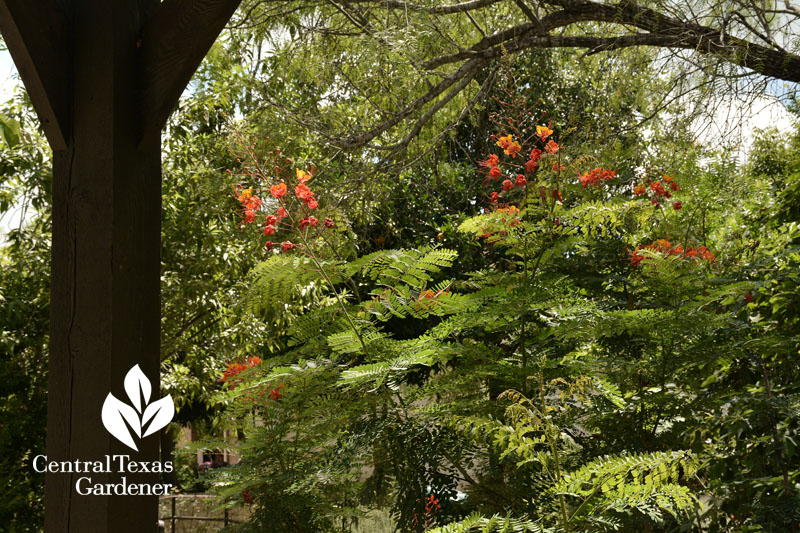
Returning Heroes Home Beverly Lamoureux especially likes the butterfly garden. The butterfly is their symbol of hope for burn patients in their chrysalis of bandages until they emerge again. Often, their first request is to go outside and bask in the healing power of flowers.
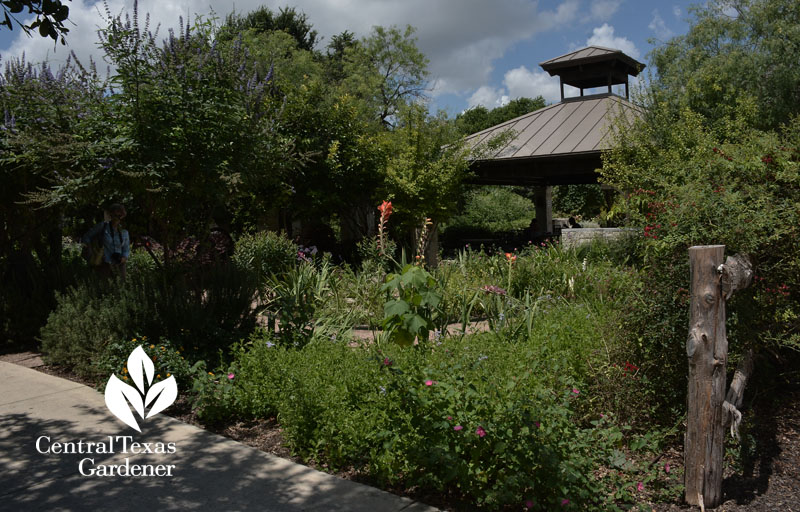
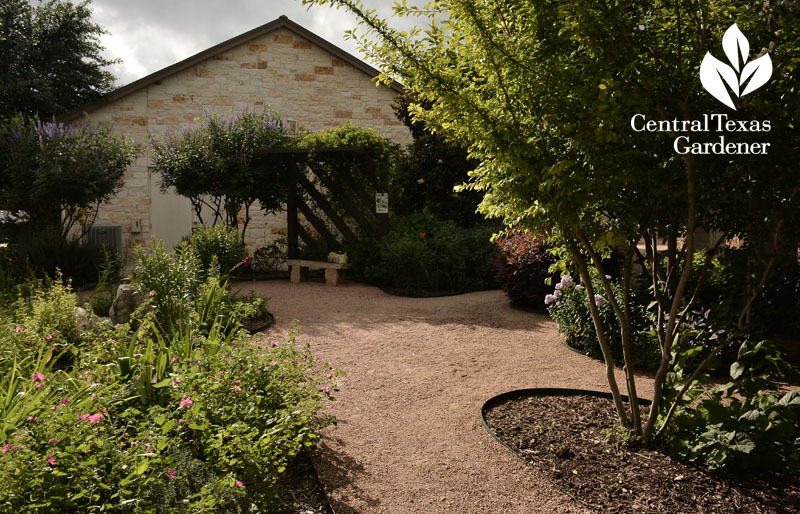
The garden segues into an outdoor kitchen, where community donors provide breakfasts, dinners, and events for the families.
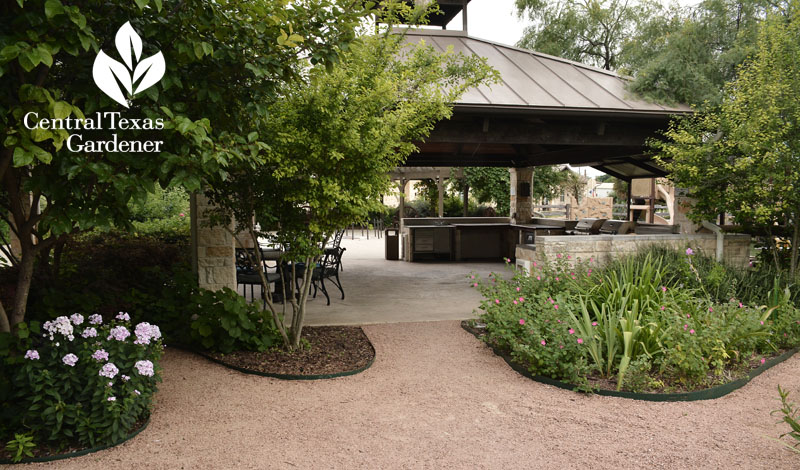
It adjoins the Purple Heart patio, enjoyed not only on ceremonial occasions. Its grapevine-covered pergola, framed by fragrance and color, invites daily reflection on service and honor.
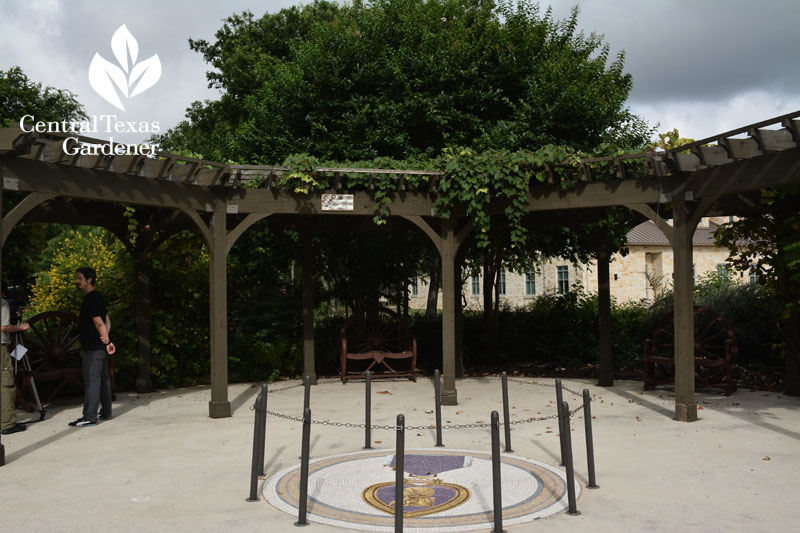
Everywhere, there’s soothing water to induce emotional calm and temper the Texas heat.
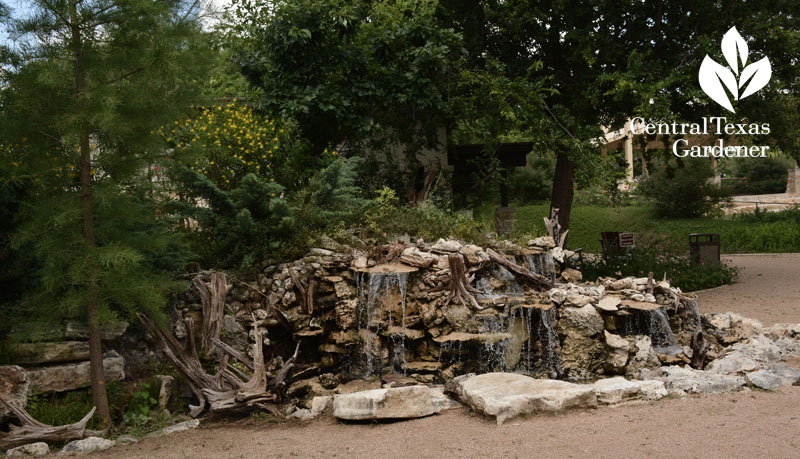
There’s also water from above. Misters along shaded porches, walkways and the kitchen pavilion cool soldiers who can’t regulate their body heat or be exposed to direct sunlight.
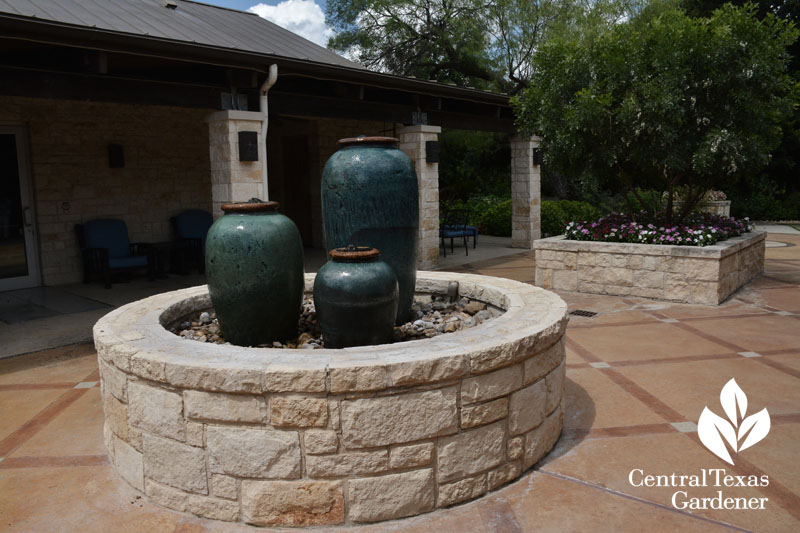
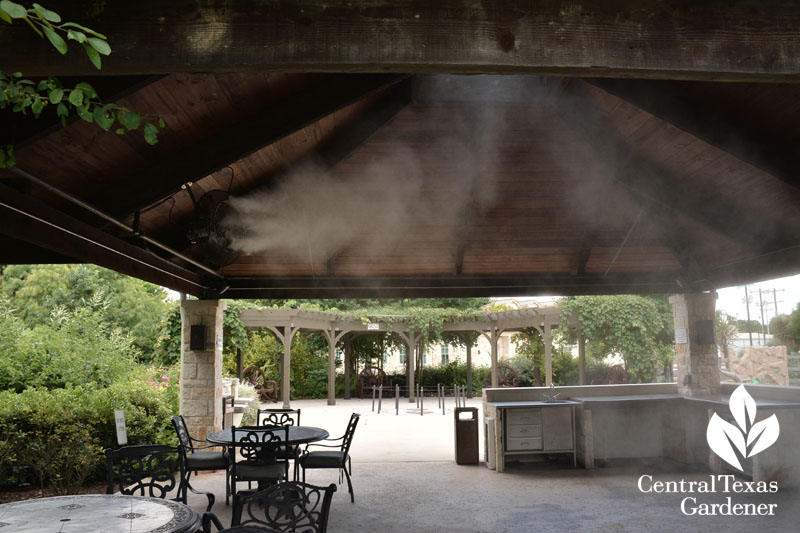
Since families can spend months or years here, playgrounds small and big let children run around and have fun like they did at home, important therapy for their parents, too.
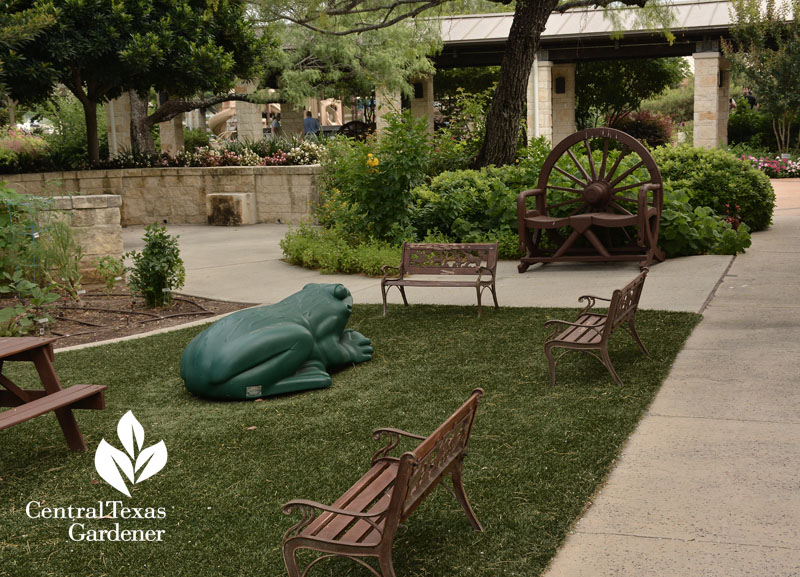
Judith Markelz says, “For a moment in time, you’re where you used to be, and you will never be again. On the front door it says, “Life is all about how you handle plan B here, because plan A is gone.” Part of our job, and all of the community’s job, is to help them find and succeed at plan B.”
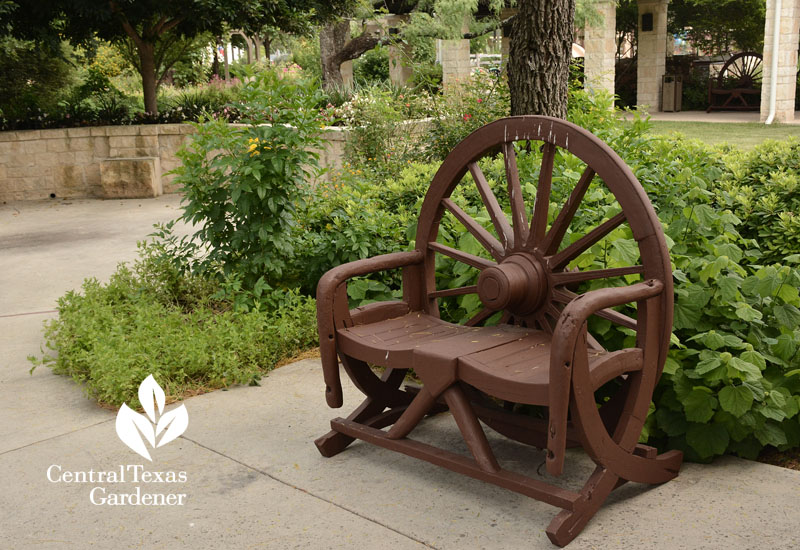
Watch the whole story now!
Until next week, cheers from me and my dear mom-in-law who joined us at our taping. And thanks for stopping by!
